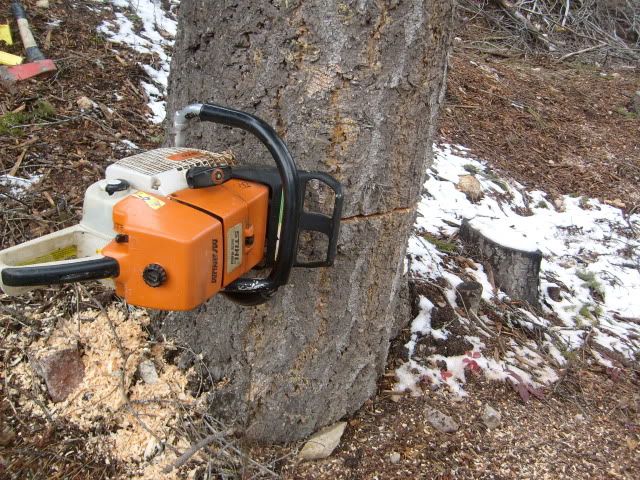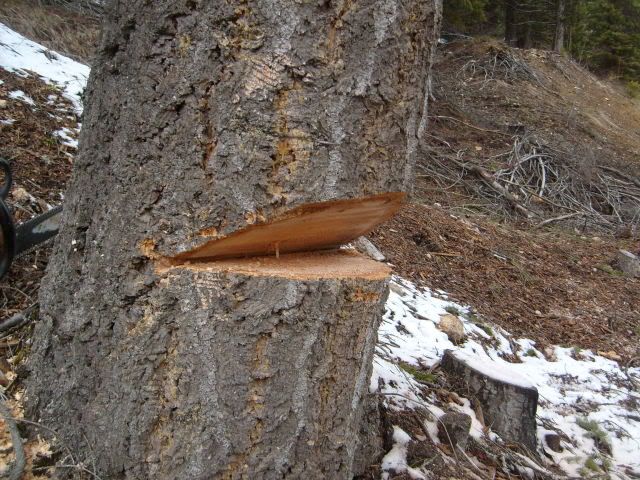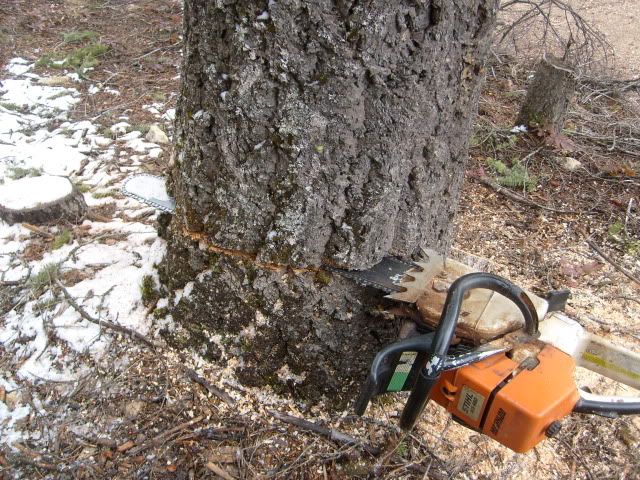-
Guest

I would like to add something I dont think I saw.
Something I learned in managing a small engine repair place. Carbs. You can get a whole carb assembly for around 100 bucks usually. I would suggest buy a spare one along with couple repair kits, be it a diaphram or float carb.
If you were ever under the gun dealing with downed trees from like a EQ or landslide you dont wanna screw with rebuilding one right then and there.. Obviously having a back up saw is even better.
Also a lot of places employ a younger kid to resharpen chain saw blades and then the store resells them at a discount. 7-8 bucks beats 20 any day of the week.
Just my $0.02 worth
Aweaome thread
-
On to the actual falling.
You've pick out the safest direction of falling, so it is time to make your first cut.
Starting on the side that you intend the tree to fall, make a horizontal cut into the tree no more than 1/3 the diameter of the thickness of the tree. Stand naturally where the power-head of the saw is at waist level.

An easy way to know that your saw is cutting in the right direction of intended fall, is to look at the straight line of the molding just to the left of the pull-start handle. That line will tell you exactly how your beginning cut is pointing.

Next you are going to complete your wedge cut but cutting a connecting cut about 30 degrees either above or below your initial cut. I suggest to novices to do so above which I will show why later.
Now you cut out your hinge, or pie slice for the intended direction of fall.

Now we are ready to perform the back cut on the opposite side of the tree. As you are performing this function, be mindful of the tree, glance up at the top from time to time to see if the tree is beginning to fall. Make sure you have an escape route to the rear, 45 degrees either side, oblique from the rear of the tree. About 15-20 feet is good. Behind another tree is even better.
Now don't go full throttle on the back cut, you want to feather the throttle so you can observe the behavior of the tree, listen for telltale cracking, or to put a wedge in the kerf of your cut.
Wedging does two things. It prevents your chainsaw bar from being pinched if you judged the lean incorrectly, and coaxes the tree to fall in the direction you intend it to fall. Don't whack the wedge in there, but with only the force of your palm to seat it. As you keep feathering into the cut, bang the wedge in a little further with the back of a hatchet or hammer. Not to much though, you don't want to cut the tip of the wedge with your chainsaw.
When you can see the top of the tree moving, and hear cracking, its time to pull your saw out, and back away at a 45 degree angle. Never turn your back on a falling tree. If your saw won't come out.....LEAVE IT. A saw can be replaced, you can't.

Tags for this Thread
 Posting Permissions
Posting Permissions
- You may not post new threads
- You may not post replies
- You may not post attachments
- You may not edit your posts
-
Forum Rules






 Reply With Quote
Reply With Quote







Bookmarks